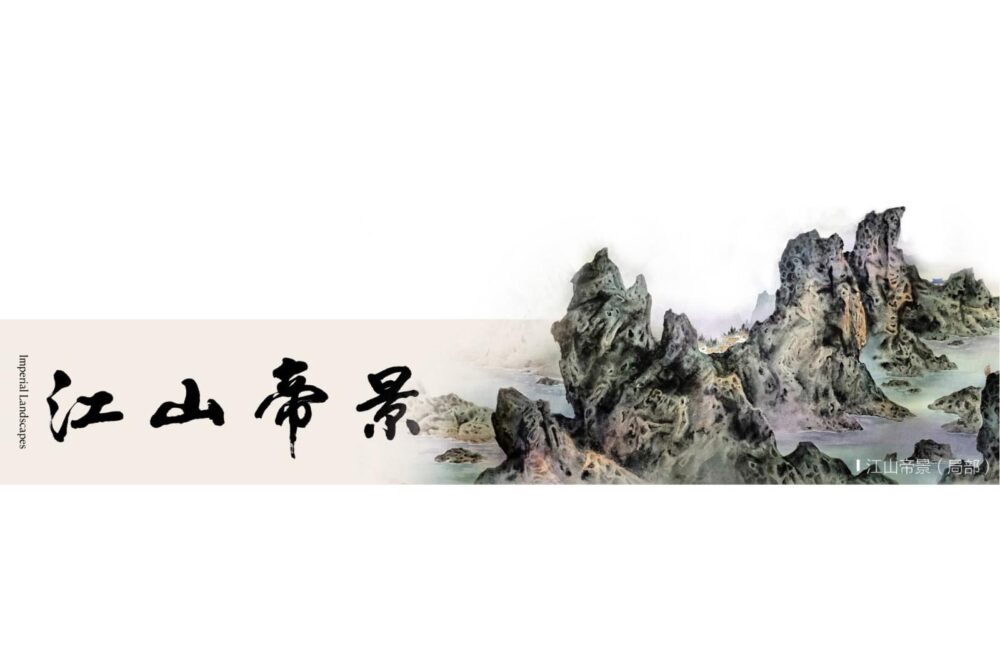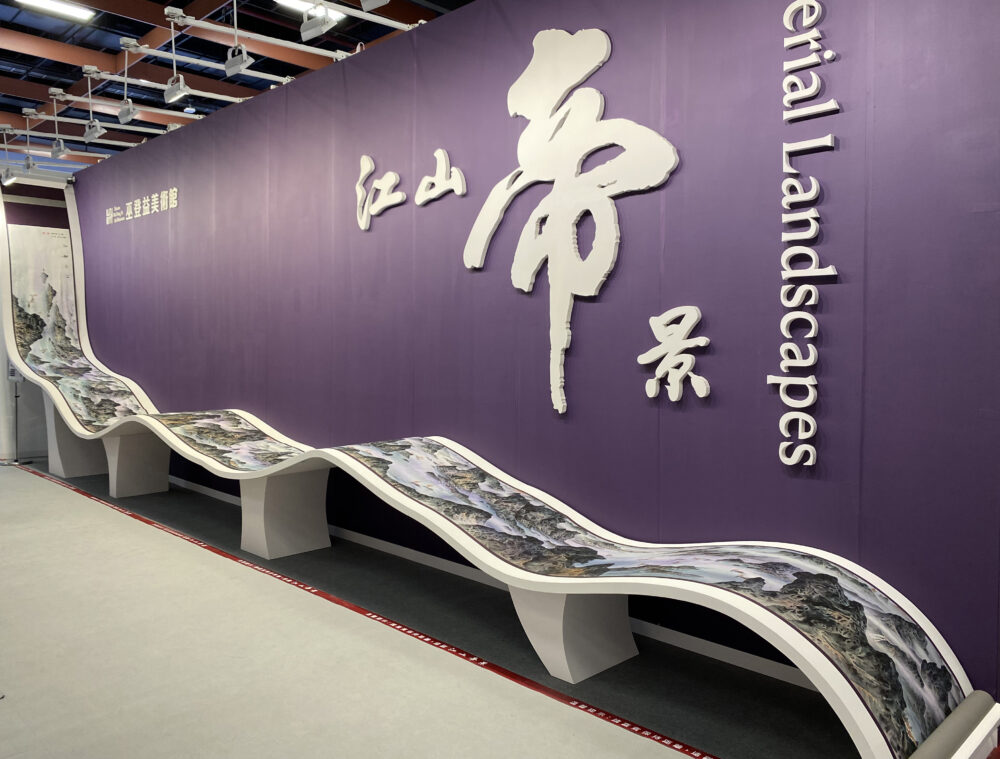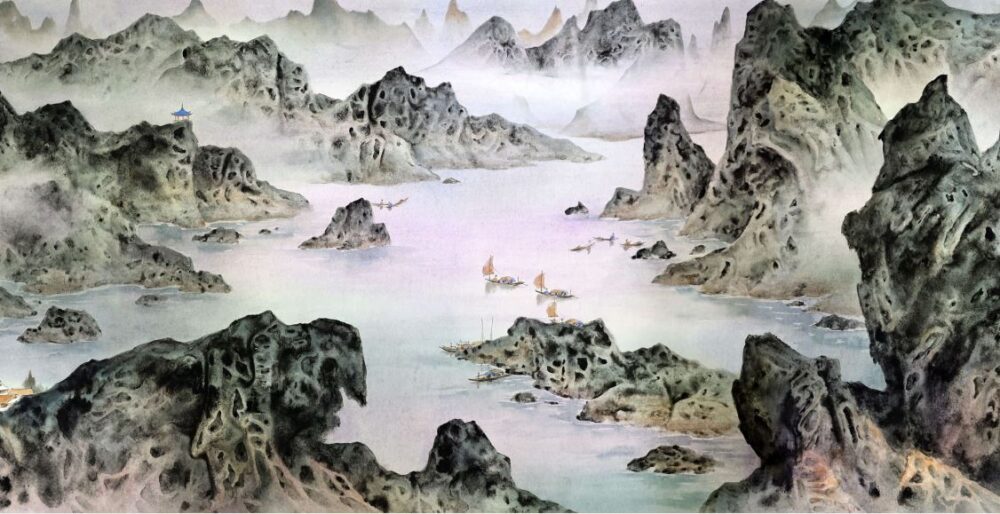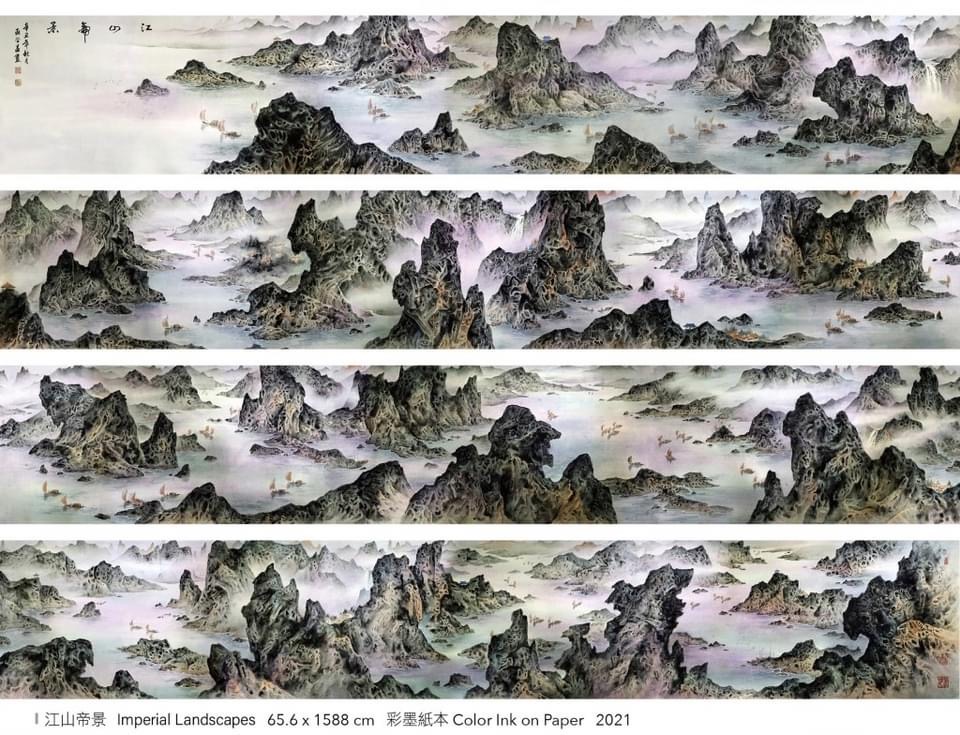No products in the cart.
Art Reviews, Museum News
Viewing Color Ink Art from Wu Deng-yi’s《Imperial Landscapes》
Wu Deng-yi is born in Nanto, Taiwan. He graduated from National Taiwan University of Arts and earned his master degree of Fine Arts in National Taiwan Normal University. During school, Wu has already mastered the techniques of Chinese painting. As a full-time artist, Wu had more opportunities to travel abroad and visit famous scenic locations. He also won several prizes and is highly recognized in the field of calligraphy and painting. In 2020, Taiwan Wu Dengyi Art Museum is founded to display Mr. Wu’s modern color ink style with a more personal creative consciousness.
Although Mr. Wu is already 70 years old this year, he is still full of passion and productive. Most of Wu’s works show the magnitude of nature but also the peaceful and quiet flavor of landscape paintings. He is not only good at color ink art but also other different styles of art. The hand scroll 《Imperial Landscapes》 was displayed in ART TAIPEI 2021. As an extra large size painting, it left viewers some strong impressions, and it, indeed, one of the most stunning color ink artworks in the exhibition.

So, what kind of ideas are contained in 《Imperial Landscapes》?《Imperial Landscapes》was completed in three years, and Mr. Wu Deng-yi showed his accumulated painting experience in his paintings. This work is not a sketch of mountains and rivers, but a self-description that is closer to the spiritual image. In terms of composition, the artist guides the viewer’s mind from the traditional long scroll method of “receiving while watching”. With a multi-point perspective like a personal tour, it delicately depicts the state of mind. Let the viewers experience the situation and move with the artist’s idea, and feel the comfort brought by the mountains and rivers.

On a closer look at this long scroll, there are many boats and buildings in the painting. Boats and boats in different directions, far or near, can imagine the daily work of fishermen. The buildings are scattered among the mountains and rocks, which also implies the home of the fisherman. The high and low, far and near rocky mountains in the painting are not common by the water and have realistic appearance of trees, but are closer in shape to the Taihu rocks in the courtyard.
It is quite interesting that the artist simulates natural rocks, re-enlarges them and places them in nature. Perhaps it is a vague hint to the viewer that this work carries a spiritual pursuit full of literati elegance. The water surface in the painting is calm and without waves, which also reflects the physical and mental balance that traditional literati or practitioners yearn for. Entering《Imperial Landscapes》, we can see the comfortable daily life and the lofty pursuit. Whether the paintings are placed in ancient or modern times, they can be understood by the viewer.

In addition to the tangible vocabulary, the invisible clouds and mists written by Mr. Wu Deng-yi are even more wonderful. The dense water vapor is lingering, but it does not appear damp and stuffy because of the sense of circulation. On the contrary, it produces a rather cool feeling in the hearts of the viewers. As if the breeze was blowing gently in the painting, it was very comfortable to see thousands of miles. What also attracts attention is the light dyeing between water and air, which is almost like a rainbow after rain, which contains extremely rich colors, adding vitality and interest to the viewer’s heart.
When examining the relationship between ink, color and white that Wu Deng-yi manages, one will find that his painting steps are very complicated. From the heaviest rocks, the water vapor with changing colors, to the delicate white ripples between the mountains and the water. It is not difficult to see that the artist has gone through thousands of light over-dyeing steps in three years. When the painter enters such a state, what makes people move is not only the carefulness or perseverance, but the return to the basics above it. All the painting elements are rubbed together in a natural way, once again showing the artist’s achievements in the field of aesthetics and philosophy.
《Imperial Landscapes》also contains the artist’s perception of time and time through space narration. Mr. Wu Deng-yi made the classical literati temperament come alive again in the hearts of today’s painting viewers. This is a stack of life experiences and a reinterpretation of cultural history. On top of the familiar visual representation, Mr. Wu Deng-yi embodies a philosophy of life. Like many aspects of life, the artist conveys the richness of liveliness and tranquility, grandeur and delicacy, daily life and spiritual pursuit in his paintings. Whether it is near or far, it provides a rich way of perception for different viewers.

The positioning of art using brush and ink in contemporary society is already different from the inheritance of history. Since the beginning of the 20th century, when the global artistic thinking began to dialogue, many art giants have continued to experiment and innovate. Especially in the contemporary era, after the pen and ink have become a pure artistic tool, today’s artists are striving to find new possibilities under the constraints of the literati system.
